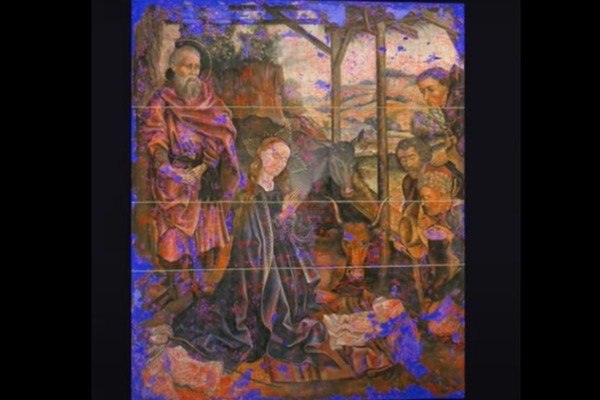AI Restoration Method Revolutionizes Art Tradition: 15th-Century Oil Painting Quickly Recovered

A groundbreaking art restoration method developed by a graduate student at the Massachusetts Institute of Technology (MIT) has recently been featured in the prestigious international journal Nature. This innovative technique, which combines artificial intelligence with precision printing technology, successfully restored a damaged 15th-century oil painting in just 3.5 hours, astonishing both the art and science communities.
The subject of this restoration was a European religious-themed painting that had suffered centuries of weathering and multiple manual interventions, leaving its imagery blurred and its original appearance difficult to discern. Researcher Alex Kachkine proposed a “non-invasive mask reconstruction technique” that integrates image recognition, algorithmic projection, and dual-layer transparent film printing to restore the painting’s details without directly contacting the canvas.
Kachkine first recorded the condition of the artwork using high-resolution scanning. He then analyzed the damage with a custom-built AI system capable of selecting matching color segments from over 50,000 shades and identifying more than 5,600 damaged points. Using two ultra-thin polymer films, he separately printed a white base layer and a color-ink pattern layer to simulate the original light, shadow, and brushstrokes. These films were manually aligned and applied to the painting, creating the visual effect of a complete image without adding any new pigment to the canvas itself.
This restoration process is fully reversible — the films can be removed at any time without leaving residue, preserving the original material. Each restoration is also thoroughly digitized and documented, facilitating future repair comparisons. This “reversible restoration” model has gained academic recognition and is considered a promising new approach to cultural heritage preservation.
Despite its impressive efficiency and precision, the technology has sparked debate within the academic community. German art conservation expert Gunnar Heydenreich cautioned that AI-driven inference might lead to excessive reconstruction or even distort historical authenticity. He emphasized that restoration should respect the original traces and cultural context rather than merely pursue visual perfection.
On the other hand, conservation specialist Hartmut Kutzke welcomed the method as a boon for small and medium-sized institutions with limited resources. He noted that many historically significant yet less valuable paintings have remained untreated for years, but now stand a chance to be revived at low cost and reintroduced to the public, making art more accessible.
This study not only demonstrates the potential of interdisciplinary collaboration but also invites renewed reflection on the purpose and boundaries of restoration work. From traditional craftsmanship to digital innovation, artificial intelligence is breathing new life into historical art in ways never seen before.
- 97 reads
Human Rights
Fostering a More Humane World: The 28th Eurasian Economic Summi

Conscience, Hope, and Action: Keys to Global Peace and Sustainability

Ringing FOWPAL’s Peace Bell for the World:Nobel Peace Prize Laureates’ Visions and Actions

Protecting the World’s Cultural Diversity for a Sustainable Future

Puppet Show I International Friendship Day 2020

